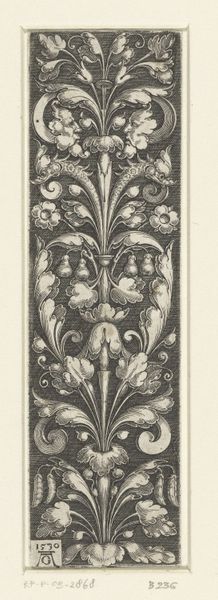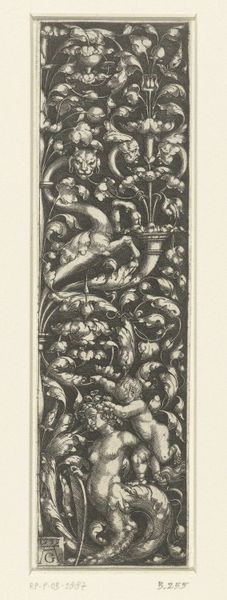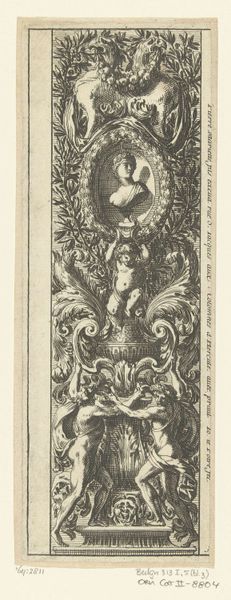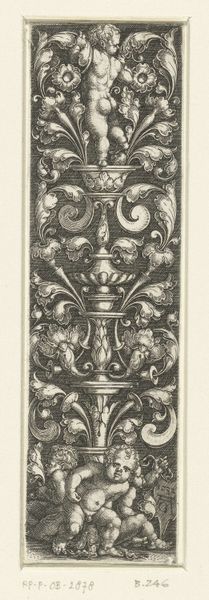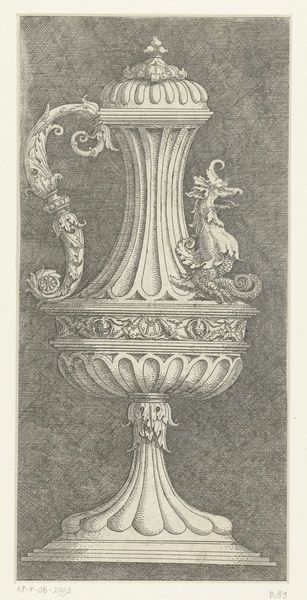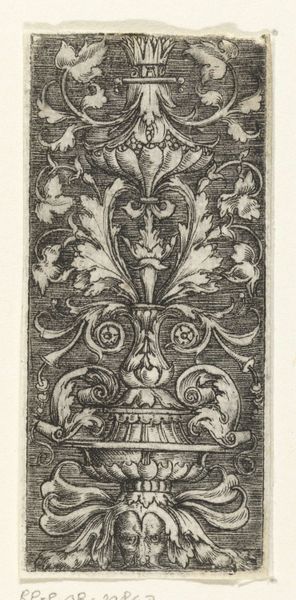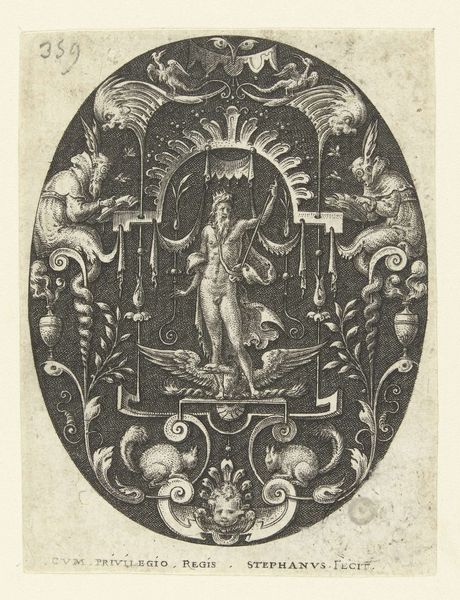
print, engraving
# print
#
mannerism
#
figuration
#
history-painting
#
nude
#
engraving
Dimensions: height 165 mm, width 31 mm, width 18 mm
Copyright: Rijks Museum: Open Domain
Curator: This engraving from 1528 is by Heinrich Aldegrever, titled "Design for a Sheath with the Whore of Babylon." The detail is quite impressive, even on such a small scale. Editor: It's so intricate! I am fascinated by the nude figure at the top holding what looks like a chalice, but how does this design, meant to be applied on a sheath, serve its function? Curator: Precisely! Think about the cultural context and the materials involved. The image would likely have been transferred onto metal through painstaking labor. Aldegrever, influenced by Mannerism, pushes the boundaries of the conventional "high arts" by focusing on prints for artisans. We should be concerned about the consumer’s desire for such images and what the manufacturing process can reveal about class divisions. What does it tell us about consumption? Editor: It makes sense that these would be items made to be sold widely to consumers who have access to finely crafted metal goods, expanding the artwork beyond a privileged elite. What about the subject itself, though, the "Whore of Babylon?" What’s her role in this context? Curator: Consider her role. What does it mean to adorn everyday objects with such potent, loaded imagery? The materials used in creating this functional item elevated it beyond the merely practical. Was this meant as an assertion of power, morality, or maybe even as an ironic statement given that it depicts the “Whore”? What can such images on such items tell us about consumption and social values in the 16th century? Editor: That's such a good question. Perhaps its impact on culture stemmed from the shock value of decorating something so utilitarian with such a symbolically controversial image, sparking discussions around class and morals for people of varying socioeconomic strata! Curator: Indeed. By looking at it in the context of its intended use and how it was made we can start to really unpack Aldegrever's social commentary and also understand its wide-reaching societal influence! Editor: That opens up my perspective. Thanks for encouraging me to think more about this image through the lens of labor, process and manufacturing, and materials rather than simply subject matter!
Comments
No comments
Be the first to comment and join the conversation on the ultimate creative platform.

